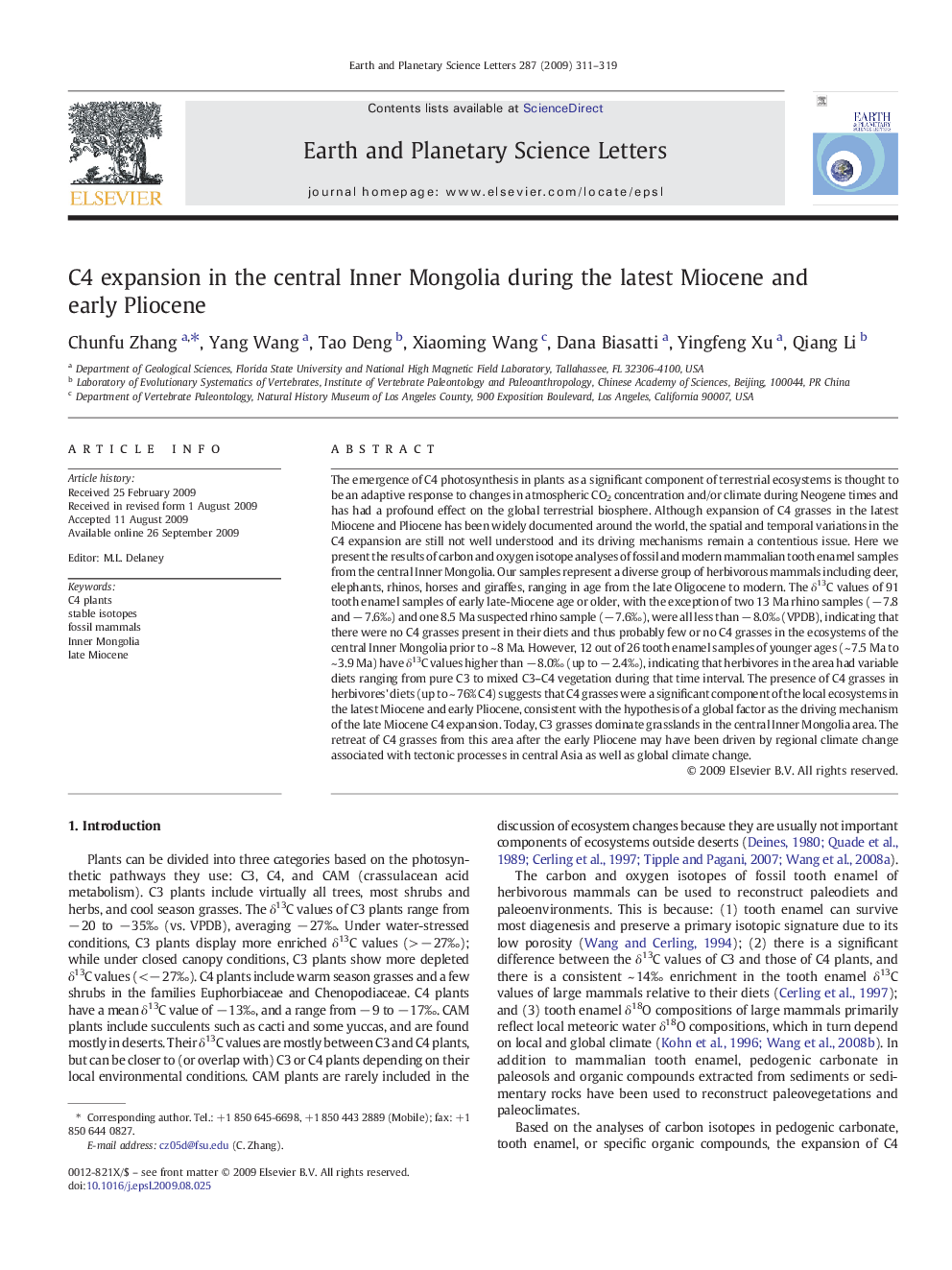| کد مقاله | کد نشریه | سال انتشار | مقاله انگلیسی | نسخه تمام متن |
|---|---|---|---|---|
| 4679045 | 1634864 | 2009 | 9 صفحه PDF | دانلود رایگان |

The emergence of C4 photosynthesis in plants as a significant component of terrestrial ecosystems is thought to be an adaptive response to changes in atmospheric CO2 concentration and/or climate during Neogene times and has had a profound effect on the global terrestrial biosphere. Although expansion of C4 grasses in the latest Miocene and Pliocene has been widely documented around the world, the spatial and temporal variations in the C4 expansion are still not well understood and its driving mechanisms remain a contentious issue. Here we present the results of carbon and oxygen isotope analyses of fossil and modern mammalian tooth enamel samples from the central Inner Mongolia. Our samples represent a diverse group of herbivorous mammals including deer, elephants, rhinos, horses and giraffes, ranging in age from the late Oligocene to modern. The δ13C values of 91 tooth enamel samples of early late-Miocene age or older, with the exception of two 13 Ma rhino samples (− 7.8 and − 7.6‰) and one 8.5 Ma suspected rhino sample (− 7.6‰), were all less than − 8.0‰ (VPDB), indicating that there were no C4 grasses present in their diets and thus probably few or no C4 grasses in the ecosystems of the central Inner Mongolia prior to ~ 8 Ma. However, 12 out of 26 tooth enamel samples of younger ages (~ 7.5 Ma to ~ 3.9 Ma) have δ13C values higher than − 8.0‰ (up to − 2.4‰), indicating that herbivores in the area had variable diets ranging from pure C3 to mixed C3–C4 vegetation during that time interval. The presence of C4 grasses in herbivores' diets (up to ~ 76% C4) suggests that C4 grasses were a significant component of the local ecosystems in the latest Miocene and early Pliocene, consistent with the hypothesis of a global factor as the driving mechanism of the late Miocene C4 expansion. Today, C3 grasses dominate grasslands in the central Inner Mongolia area. The retreat of C4 grasses from this area after the early Pliocene may have been driven by regional climate change associated with tectonic processes in central Asia as well as global climate change.
Journal: Earth and Planetary Science Letters - Volume 287, Issues 3–4, 15 October 2009, Pages 311–319